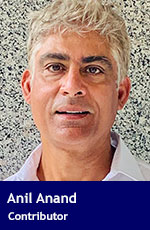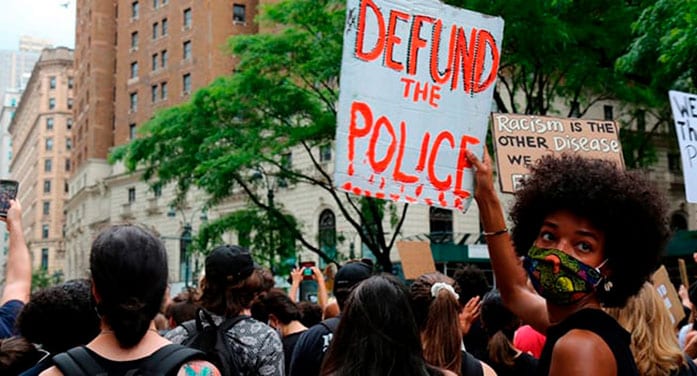 The trial of Derek Chauvin for the murder of George Floyd exposed Minneapolis Police Chief Medaria Arradondo and forced him to give evidence and account for – or, more correctly, reject – Chauvin’s actions. The televised trial, with testimony from other police officers, including Arradondo, was an extraordinary event.
The trial of Derek Chauvin for the murder of George Floyd exposed Minneapolis Police Chief Medaria Arradondo and forced him to give evidence and account for – or, more correctly, reject – Chauvin’s actions. The televised trial, with testimony from other police officers, including Arradondo, was an extraordinary event.
Chavin was found guilty on all three counts he faced and will be sentenced on June 16.
The violent protests across the United States ignited by the death of Floyd – under Chauvin’s knee for nine minutes and 29 seconds – were largely directed against police services. And while the underlying inequalities and systemic barriers aggravated the anger, police action was the catalyst for violent national and international protests.
There’s no denying the challenges police in the United States confront daily, challenges resulting from policies and conditions far beyond the purview of policing. Poverty, unemployment, racism, mental illness and myriad other social issues all remain outside of the purview of policing, yet policing is the only 24/7 social service available to respond to the consequences of all social ills.
These are nearly insurmountable challenges. Nonetheless, police officers are sworn to protect and serve their communities fairly and with compassion. The majority of officers do exactly that, often at great peril and self-sacrifice. And yet, for having passed a counterfeit bill, Floyd was forcefully arrested, abused and died at the hands of one such officer while others watched.
Floyd’s is only one in a long chain of similar cases:
- Haitian immigrant Abner Louima was sodomized in a New York police precinct bathroom in 1997.
- Amadou Diallo was shot outside his home in New York in 1999.
- Oscar Grant was shot in the back of the head while lying flat, head down, on a rapid transit platform in Oakland in 2009.
- A New York officer tackled and choked Eric Garner in 2014 for selling illegal cigarettes.
- In 2014, Michael Brown was fatally shot while unarmed in Ferguson, Mo.
- Walter Scott was fatally shot after being stopped in 2015 for a broken brake light in North Charleston, S.C.
- After being arrested with a knife in his pocket, Freddy Grey later died from a severe spinal injury sustained during transport to a Baltimore police station in 2015.
- In 2016, Philando Castile was shot during a traffic stop in Minnesota. He was reaching for his identification as his girlfriend live-streamed the confrontation.
Too many officers across the United States have used excessive force, up to and including deadly force. Too many officers have been complicit by their lack of intervention during their colleagues’ misconduct. These are undeniable signs of deeper levels of bias, racism and tolerance for abuse of police powers within their organizations. These are also signs of a leadership out of touch with the organizational culture under their command, their inability to bring about cultural change or their wilful blindness to systemic issues that seem so evident to too many across the United States.
Police officers are no ordinary citizens; they have sworn to serve and protect, they receive extensive and intensive training in public safety, they generally have first-aid training, understand criminal law, and enjoy privilege and authority. They have extensive use-of-force training, options for the use of force and discretion in the use of their authority.
Accused officers traditionally receive greater tolerance and discretionary consideration than would an ordinary citizen. This, thankfully, was not the case for Chauvin. In fact, Chauvin should face greater penalty by virtue of his training and understanding of the consequences of his calculated actions.
Too many chiefs and mayors have been out of touch with the cultural propensity for individual bias, systemic bias, signs of abuse of authority or unearned privilege by members of their police services. Worse, there have been hundreds of cases of police abuse over the past decade. Across the U.S., officers have preyed on victims or failed to intervene when they observed misconduct.
There’s no place for cowards, racists, sociopaths or murderers in a police department. And yet, such officers seem to be detected with alarming regularity.
Too often, other officers have stood by and done nothing while observing misconduct. It’s a sign of normative attitudes, of the blue code, or because officers were simply too weak or frightened to do something about it. This reflects far more serious and endemic failures of the organizational culture, of other officers, of supervisors, commanders and chiefs.
The majority of police officers are exceptional public servants who attempt to do their best under unbelievably challenging conditions. Well-intentioned and dedicated officers who have been subject to dysfunctional cultures are betrayed, not only by their colleagues’ misconduct but even more significantly by their leadership.
Arradondo’s testimony at Chauvin’s trial sent a powerful message – it unshackled every member throughout the department to take a stand, to be supported as a witness and agent against misconduct, and to reset the power of oath of office that each officer takes.
The Minneapolis Police Department and its leadership are taking full accountability – a welcome and laudable anomaly. Arradondo’s testimony could be a paradigm shift in police culture.
But let’s be clear – the protests across the United States following Floyd’s death have been counter to the institution of policing. These protests are first and foremost against police chiefs and commissioners.
Arradondo’s testimony sent a powerful message – but Minneapolis is one city, George Floyd one among many and Derek Chauvin is not an anomaly.
Anil Anand is a research associate with the Frontier Centre for Public Policy.
Anil is one of our Thought Leaders. For interview requests, click here.
The views, opinions and positions expressed by columnists and contributors are the authors’ alone. They do not inherently or expressly reflect the views, opinions and/or positions of our publication.
© Troy Media
Troy Media is an editorial content provider to media outlets and its own hosted community news outlets across Canada.

